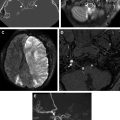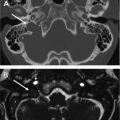Over the last two decades, there has been a marked increase in the number of computed tomography (CT) studies performed in the United States, with a resultant increase in the radiation dose delivered to patients. Hence there is an urgent need to optimize CT protocols and to get familiar with the factors affecting the CT radiation dose and with available dose reduction options. This article discusses the basic physics related to CT technique and describes current and future methods of dose reduction. Also briefly described are other CT techniques applicable in the maxillofacial region, such as three-dimensional CT, cone beam CT, and dual-energy CT.
Key points
- •
Over the last decade there has been escalating concern regarding the increasing radiation exposure stemming from CT examinations.
- •
It is becoming increasingly important to optimize CT imaging protocols and to apply dose-reduction techniques to ensure optimal imaging with the lowest possible dose.
- •
Several other advancements of CT technique applicable to the craniofacial region including three-dimensional CT, cone beam CT, and dual-energy CT are now widely used to best possible information about various craniofacial pathologies.
Introduction
Technological advances in computed tomography (CT) have generated a dramatic increase in the number of CT studies, with resultant increase in the radiation dose to patients. CT accounts for less than 20% of medical imaging studies, but approximately 60% of diagnostic imaging radiation dose. Newer developments and usage of ultrasound and magnetic resonance imaging have failed to substantially reduce the overall number of CT examinations. In many instances, the CT scan is the first and only diagnostic imaging examination performed. In addition, advent of helical multidetector CT techniques with rapid acquisition times and newer applications, such as CT angiography, perfusion CT, and dual-energy CT, have led to a further increase in CT examinations. The overall increase in radiation dose is causing increasing concern among the radiologic community and general public alike.
The US Food and Drug Administration has established guidelines to address the growing concern over CT-associated radiation dose. Their recommendations center on optimizing CT protocols and encouraging elimination of inappropriate CT referrals and unnecessary repeat examinations. The basic pillars of dose reduction include justification of the study and eliminating inappropriate CT referrals, limiting scan range to the region of interest, limiting the number of contrast phases, and use of a relatively large pitch ( Box 1 ). The goal is a radiation dose as low as reasonably achievable. Radiation dose delivered to the patient is proportional to the amount of energy delivered by the photons within the x-ray beam. This depends on the number of the photons and the individual photon energy, which is dictated by the image acquisition parameters, such as kilovoltage (kilovolt [peak]), tube current (milliampere), and x-ray tube rotation time along with such other factors as slice thickness, scan coverage, and pitch. Additionally, body habitus and size of the patient are important factors for the radiation dose delivered, especially for pediatric patients and small adults. There have been several advances in dose reduction techniques. These include tube current modulation, peak voltage optimization, noise reduction reconstruction algorithms, adaptive dose collimation, and improved detection system efficiency. It is imperative for practicing radiologists to be familiar with these dose reduction techniques and to optimize the imaging protocols to get the best possible images with the least possible dose.
- •
Justification of the CT study/elimination of inappropriate CT referrals
- •
Limiting CT scan range to the region of interest
- •
Limiting the number of contrast phases
- •
Use of a relatively large pitch
- •
Use of automated tube current modulation
- •
Use of adaptive dose shielding
- •
Use of newer image reconstruction algorithms
This article discusses the basic physics related to CT technique and describes current and future methods of dose reduction. Also briefly described are other CT techniques applicable in the maxillofacial region, such as three-dimensional CT, cone beam CT (CBCT), and dual-energy CT. We provide CT scanning parameters used at our institutions for the maxillofacial region in adults and children ( Boxes 2 and 3 ).
| Scan type | Helical |
| HiRes mode | On |
| Gantry rot time/length | 0.5 s full |
| Detector coverage | 20 mm |
| Slice thickness | 0.625 mm |
| Interval | 0.625 mm |
| Pitch | 0.969:1 |
| Speed | 19.37 |
| kVp | 100 |
| mA | 250 |
| ASIR % | 30 |
| % of dose reduction | None |
| Recon mode | Plus |
| SFOV | Head |
| DFOV | 16–18 |
| Algorithm | HD Bone Plus |
| WW/WL | 4000/1000 |
Generate axial, coronal, and sagittal reformats in both standard and bone algorithm
| DFOV | Optimize |
| Thickness | 2.5 mm |
| Spacing | 2.5 mm |
| Render mode | Average |
| WW/WL (bone) | 4000/1000 |
| WW/WL (standard) | 350/50 |
| Scan type | Helical |
| HiRes mode | On |
| Gantry rot time/lengths | 0.5 s full |
| Detector coverage | 20 mm |
| Slice thickness | 0.625 mm |
| Interval | 0.625 mm |
| Pitch | 0.531 |
| Speed | 10.62 |
| kVp | 100 |
| mA 0–3 years | 80 |
| mA 3–12 years | 100 |
| mA 12+ years | 120 |
| ASIR % | 30 |
| % of dose reduction | None |
| Recon mode | Plus |
| SFOV | Ped head |
| SFOV 12+ years | Small head |
| DFOV | Optmize |
| Algorithm | HD Bone Plus |
| WW/WL | 4000/1000 |
Generate axial, coronal, and sagittal reformats in both standard and bone algorithm
| DFOV | Optimize |
| Thickness | 2 mm |
| Spacing | 2 mm |
| Render mode | Average |
| WW/WL (HD bone) | 4000/1000 |
| WW/WL (HD standard) | 350/50 |
Introduction
Technological advances in computed tomography (CT) have generated a dramatic increase in the number of CT studies, with resultant increase in the radiation dose to patients. CT accounts for less than 20% of medical imaging studies, but approximately 60% of diagnostic imaging radiation dose. Newer developments and usage of ultrasound and magnetic resonance imaging have failed to substantially reduce the overall number of CT examinations. In many instances, the CT scan is the first and only diagnostic imaging examination performed. In addition, advent of helical multidetector CT techniques with rapid acquisition times and newer applications, such as CT angiography, perfusion CT, and dual-energy CT, have led to a further increase in CT examinations. The overall increase in radiation dose is causing increasing concern among the radiologic community and general public alike.
The US Food and Drug Administration has established guidelines to address the growing concern over CT-associated radiation dose. Their recommendations center on optimizing CT protocols and encouraging elimination of inappropriate CT referrals and unnecessary repeat examinations. The basic pillars of dose reduction include justification of the study and eliminating inappropriate CT referrals, limiting scan range to the region of interest, limiting the number of contrast phases, and use of a relatively large pitch ( Box 1 ). The goal is a radiation dose as low as reasonably achievable. Radiation dose delivered to the patient is proportional to the amount of energy delivered by the photons within the x-ray beam. This depends on the number of the photons and the individual photon energy, which is dictated by the image acquisition parameters, such as kilovoltage (kilovolt [peak]), tube current (milliampere), and x-ray tube rotation time along with such other factors as slice thickness, scan coverage, and pitch. Additionally, body habitus and size of the patient are important factors for the radiation dose delivered, especially for pediatric patients and small adults. There have been several advances in dose reduction techniques. These include tube current modulation, peak voltage optimization, noise reduction reconstruction algorithms, adaptive dose collimation, and improved detection system efficiency. It is imperative for practicing radiologists to be familiar with these dose reduction techniques and to optimize the imaging protocols to get the best possible images with the least possible dose.
- •
Justification of the CT study/elimination of inappropriate CT referrals
- •
Limiting CT scan range to the region of interest
- •
Limiting the number of contrast phases
- •
Use of a relatively large pitch
- •
Use of automated tube current modulation
- •
Use of adaptive dose shielding
- •
Use of newer image reconstruction algorithms
This article discusses the basic physics related to CT technique and describes current and future methods of dose reduction. Also briefly described are other CT techniques applicable in the maxillofacial region, such as three-dimensional CT, cone beam CT (CBCT), and dual-energy CT. We provide CT scanning parameters used at our institutions for the maxillofacial region in adults and children ( Boxes 2 and 3 ).
| Scan type | Helical |
| HiRes mode | On |
| Gantry rot time/length | 0.5 s full |
| Detector coverage | 20 mm |
| Slice thickness | 0.625 mm |
| Interval | 0.625 mm |
| Pitch | 0.969:1 |
| Speed | 19.37 |
| kVp | 100 |
| mA | 250 |
| ASIR % | 30 |
| % of dose reduction | None |
| Recon mode | Plus |
| SFOV | Head |
| DFOV | 16–18 |
| Algorithm | HD Bone Plus |
| WW/WL | 4000/1000 |
Generate axial, coronal, and sagittal reformats in both standard and bone algorithm
| DFOV | Optimize |
| Thickness | 2.5 mm |
| Spacing | 2.5 mm |
| Render mode | Average |
| WW/WL (bone) | 4000/1000 |
| WW/WL (standard) | 350/50 |
| Scan type | Helical |
| HiRes mode | On |
| Gantry rot time/lengths | 0.5 s full |
| Detector coverage | 20 mm |
| Slice thickness | 0.625 mm |
| Interval | 0.625 mm |
| Pitch | 0.531 |
| Speed | 10.62 |
| kVp | 100 |
| mA 0–3 years | 80 |
| mA 3–12 years | 100 |
| mA 12+ years | 120 |
| ASIR % | 30 |
| % of dose reduction | None |
| Recon mode | Plus |
| SFOV | Ped head |
| SFOV 12+ years | Small head |
| DFOV | Optmize |
| Algorithm | HD Bone Plus |
| WW/WL | 4000/1000 |
Generate axial, coronal, and sagittal reformats in both standard and bone algorithm
| DFOV | Optimize |
| Thickness | 2 mm |
| Spacing | 2 mm |
| Render mode | Average |
| WW/WL (HD bone) | 4000/1000 |
| WW/WL (HD standard) | 350/50 |
CT radiation dose measurement
CT scans involve continuous exposure around the patient by the rotating gantry in the region to be examined. This leads to almost uniform deposition of energy with a relatively symmetric gradient from the surface toward the center of the patient. Because of x-ray scattering, deposition of the radiation beam energy often extends beyond the directly scanned volume into the adjacent tissues. Therefore, the radiation dose in the scanned section is the summation of the dose because of the direct beam in the scanned plane and dose contributions from radiation scattering in the adjacent tissues. The conventional metric representing the integrated dose of the direct irradiation of the scanned volume and the scattered radiation from the adjacent scanned volumes is the computed tomography dose index (CTDI) measured in milligrays (10 −3 Gy). CTDI is defined as the dose profile of a single x-ray tube rotation integrated over a scan length in the z-direction, and normalized to the table travel per tube rotation in a scan with pitch 1. The CTDI is equivalent to the multiple scan average dose, which is the average dose in the center region of the scan range over which a CT scan is performed. The CTDI vol is defined as CTDI w /pitch. The value of CTDI vol multiplied by the length of the scan (in centimeters) is known as the dose-length product (DLP) and is usually measured in units of milligray-centimeters (mGy-cm). The DLP is commonly reported on the CT scanner for each CT study and is included in the patient dose report. When considering the potential dose from the CT scan, the metric to take into consideration is the DLP because it contains the CTDI that is a measure of scanner output for a particular scanning technique and the total scanning length along the patient’s body.
Stay updated, free articles. Join our Telegram channel

Full access? Get Clinical Tree







